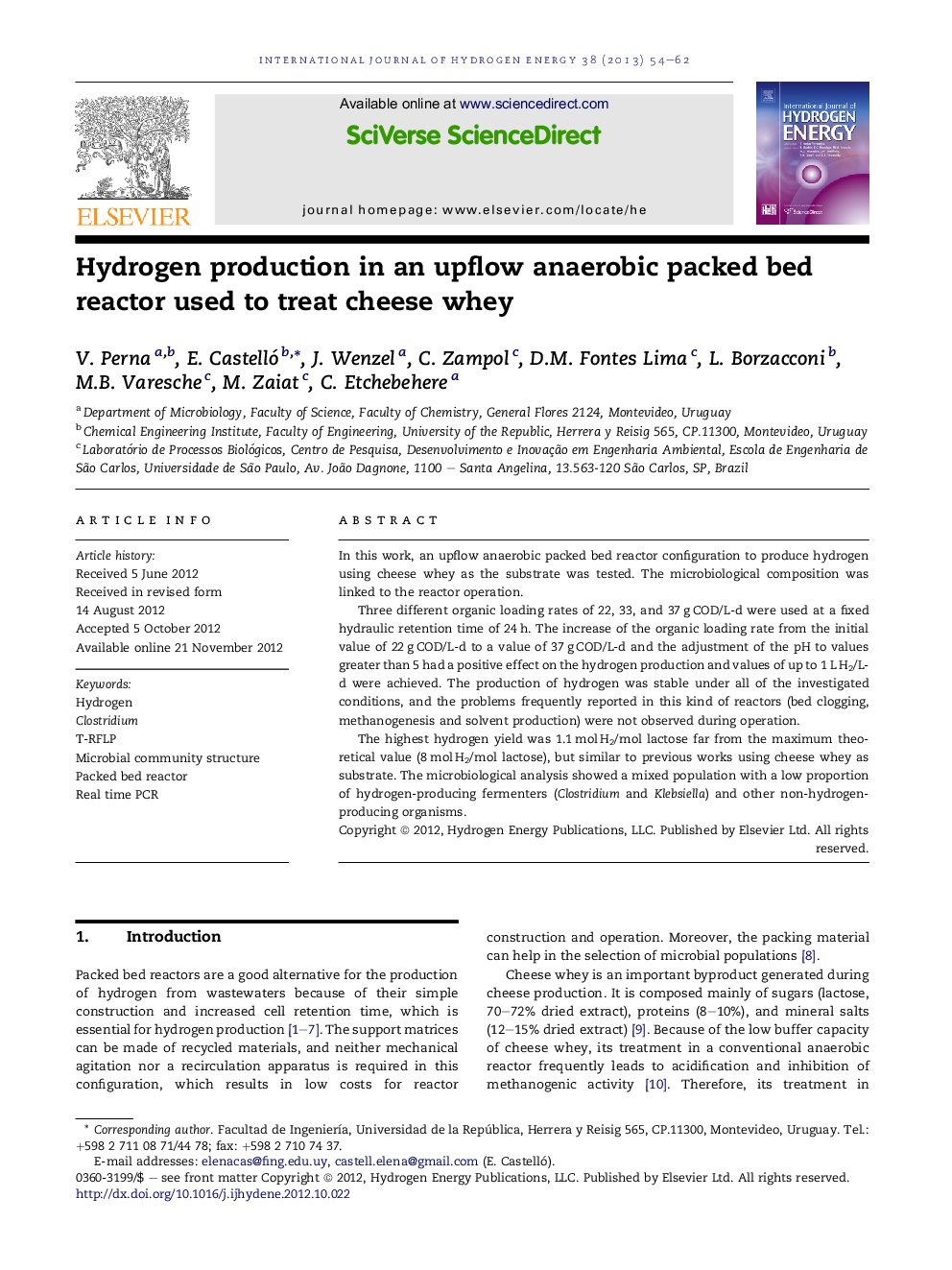| Article ID | Journal | Published Year | Pages | File Type |
|---|---|---|---|---|
| 1274349 | International Journal of Hydrogen Energy | 2013 | 9 Pages |
In this work, an upflow anaerobic packed bed reactor configuration to produce hydrogen using cheese whey as the substrate was tested. The microbiological composition was linked to the reactor operation.Three different organic loading rates of 22, 33, and 37 g COD/L-d were used at a fixed hydraulic retention time of 24 h. The increase of the organic loading rate from the initial value of 22 g COD/L-d to a value of 37 g COD/L-d and the adjustment of the pH to values greater than 5 had a positive effect on the hydrogen production and values of up to 1 L H2/L-d were achieved. The production of hydrogen was stable under all of the investigated conditions, and the problems frequently reported in this kind of reactors (bed clogging, methanogenesis and solvent production) were not observed during operation.The highest hydrogen yield was 1.1 mol H2/mol lactose far from the maximum theoretical value (8 mol H2/mol lactose), but similar to previous works using cheese whey as substrate. The microbiological analysis showed a mixed population with a low proportion of hydrogen-producing fermenters (Clostridium and Klebsiella) and other non-hydrogen-producing organisms.
► A maximum of 1 L H2/L-d was obtained in a packed bed reactor fed with cheese whey at an organic loading rate of 37 g COD/L-d. ► Increase in the organic loading rate and pH adjustment at 5 had a positive effect on the hydrogen production. ► Hydrogen production was stable, no clogging, production of methane or solvent was detected. ► Clostridium and Klebsiella were responsible for hydrogen production. ► The presence of non-hydrogen producers could be the cause of the low yield.
